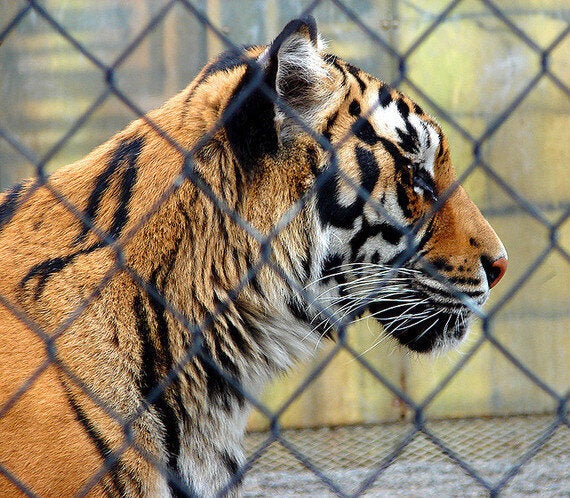What does it means to be a responsible tourist and why someone should consider their trip from an environmental perspective, and try to ensure what they do abroad and how they get there is sustainable? Frontier looks into tourist attractions labelled as "eco-tourism" or "conservation sanctuaries" involving animals and their role in responsible travel. To engage or not to engage in activities involving animals could be a difficult decision to make, and the aim of this article is to inform you, the reader, to better enable yourself to make your own choices while enjoying your trip.
Big Cat "Sanctuaries"

Image courtesy of Kieran Lamb
Perhaps one of the best examples of animal attractions purporting to be conservation orientated in popular travel destinations is the Tiger Temple in Thailand. On the surface, Wat Pha Luang Ta Bua or to most tourists and travellers "Tiger Temple" appears to be a sanctuary operated by Buddhist monks. However there are several alarming facts and observations that have been made over the many years the sanctuary has been operating. The enclosures the tigers are kept in are more than 10x below the recommended area required to comfortably house a pair of tigers or a mother and cubs, and also contain no comfortable sleeping arrangements or stimulation. The tiger temple is actively involved in the breeding of tigers to obtain tiger cubs for tourist attractions, however does not have a breeding license, and releasing any captivity-bred tigers is ineffective and often dangerous for humans due to the tiger's familiarity with human interactions. The cubs are then separated from their mother at 2 weeks and forcefully fed to act as an attraction, when typically a tiger would reside with its mother for 2 years.

Image courtesy of Matt Reinbold
When on "display", the tigers are often chained in extreme temperatures with minimal or no shade for many hours. Sadly, in order for the tigers to comply as a hands-on attraction, beatings and abuse are a regular occurrence in their upbringing and there are reports of drugging to maintain an induced sedate nature. Finally there are also many risks associated with interacting with the tigers and there are regular reports of attacks and even deaths occurring involving tourists. If all this wasn't unsettling enough, several tigers go missing from the sanctuary under inexplicable circumstances only to be replaced by a different tiger given the same name. With neighbouring countries known for valuing tiger products as a medicine, it's extremely likely those missing noble beasts suffered a less-than-noble death.
But Thailand isn't the only culprit in the abuse of animals and deception in using the terms "eco-tourism" and "conservation sanctuary". The practise also occurs in areas of South America involving leopards and in certain areas of Africa with lions and leopards. It is with great derision and scepticism that all of these places should be examined by a responsible tourist before engaging with, and certainly handing over money to, these "sanctuaries".
There are advocates of the Tiger Temple and other destinations claiming themselves to be conservation orientated or sanctuaries. Some claim although not operated perfectly or to traditional conservation standards, places like the Tiger Temple are taking steps to a similar, environmentally positive goal. The Tiger Temple in fact claims to be planning on the acquisition of land to enable them to release bred tigers into the wild to bolster the drastically reduced and critically endangered current population of wild tigers. How they plan to assimilate a captive hybrid genetic type that has almost no long-term ability to survive in the wild and would do nothing to aid in the improvement of the state of true wild tigers, however, is anyone's guess.
What can I do to be a Responsible Tourist?

Image courtesy of Frontier Thailand
Don't worry, you can still volunteer at animal sanctuaries and be a responsible tourist at the same time. There are a lot of decent projects out there looking for a helping hand. Why dont become a wildlife volunteer in South Africa? Or help elephants in India? The opportunities are endless. Frontier runs over 300 dedicated conservation and animal care projects worldwide.
Check out Frontier's blog 'Into the Wild' where you can read more articles like this!
By Jack Plumb, Online Journalism Intern at Frontier
